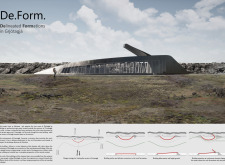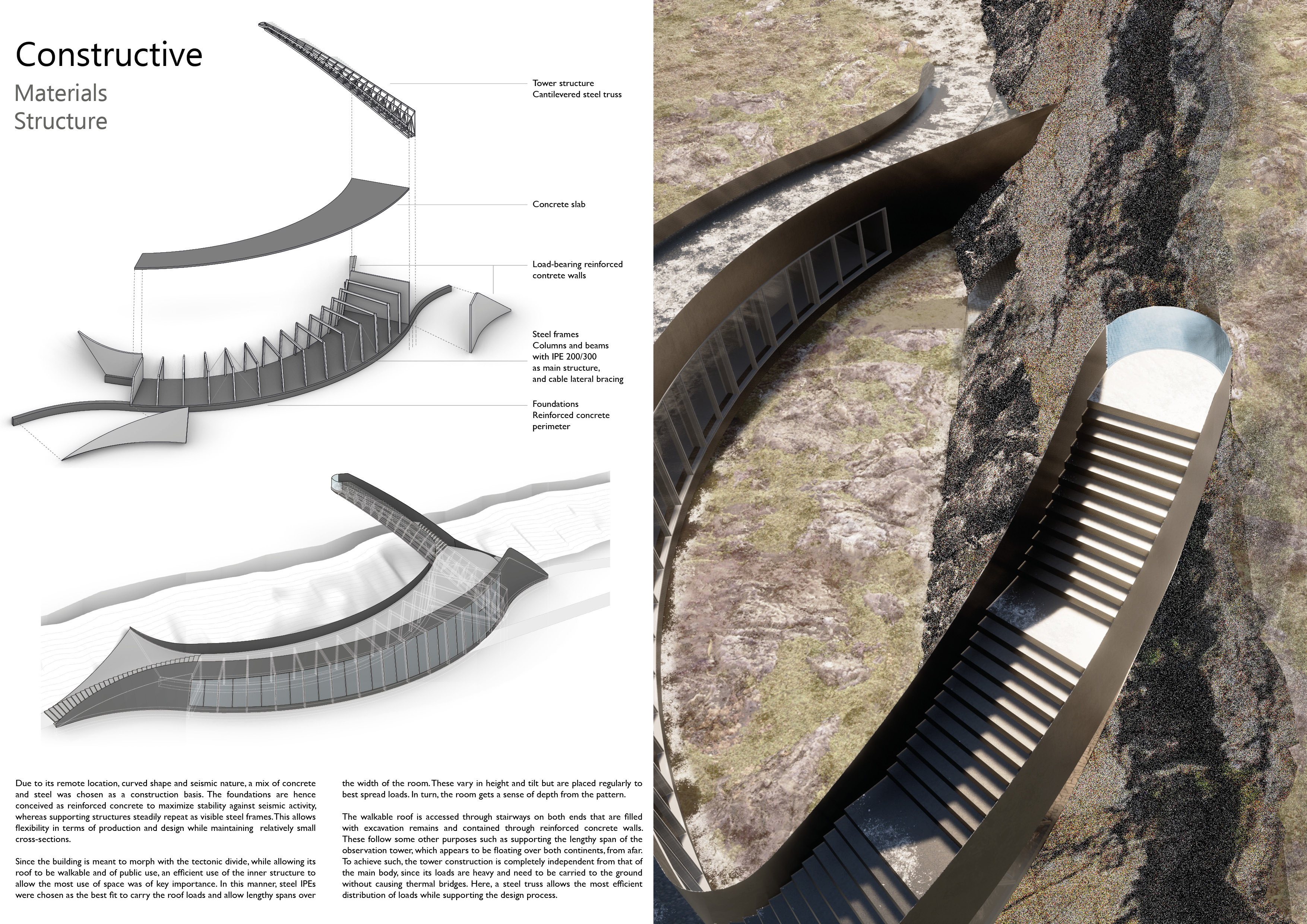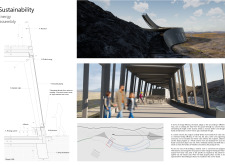5 key facts about this project
The function of "De.Form" extends beyond mere visitation; it provides essential amenities for tourists while ensuring that the ecological integrity of sensitive sites is preserved. The building serves as an educational space where visitors can learn about the natural history and geology of the region, enhancing their overall experience and appreciation of the Icelandic terrain. The architect's intent is to facilitate a connection between users and the land, making the experience of visiting a deeply immersive one.
In terms of design, "De.Form" exhibits a fluid form that echoes the natural contours of the landscape. The structure's roof is particularly noteworthy, rising elegantly to create distinct views of the surrounding environment. This approach draws inspiration from the topography, allowing the building to blend seamlessly with its context rather than contrasting sharply with it. The sinuous form not only serves aesthetic functions but also imparts a sense of movement, guiding visitors through the space and into the exterior landscape.
Materiality plays a crucial role in this architectural project, with an emphasis on locally sourced and sustainable materials. The main structural components include reinforced concrete, which provides resilience against the harsh environmental conditions typical of Icelandic landscapes, along with a canlevered steel truss that facilitates the dramatic shapes of the roofs. The facade is designed with insulated glazing that maximizes natural light while maintaining energy efficiency, reflecting a modern understanding of sustainable design principles.
Unique design approaches are evident throughout the project. The integration of landscaped elements surrounding the building creates a natural buffer, harmonizing the structure within its environment. The stepped site layout enhances accessibility, allowing visitors to navigate between different levels, all while providing moments of respite and contemplation. This thoughtful organization not only promotes environmental sustainability but also encourages social interaction among visitors.
Furthermore, the design incorporates flexible spaces that can adapt to varying visitor needs. These elements enhance the functional adaptability of the building, allowing it to accommodate various programs and activities throughout the year. The strategic placement of observation points offers visitors unique perspectives of both the building and the geological formations, fostering a deeper engagement with the site.
Overall, "De.Form" stands as a testament to contemporary architectural practice that prioritizes sustainability, contextual harmony, and visitor experience. By embodying its surroundings in both form and material, this project promotes a conservation-focused architectural narrative that reflects a deep respect for the natural environment. Readers interested in exploring this architectural project further are encouraged to review the architectural plans, sections, designs, and innovative ideas that underpin the development of this noteworthy addition to Iceland's diverse architectural landscape.


























